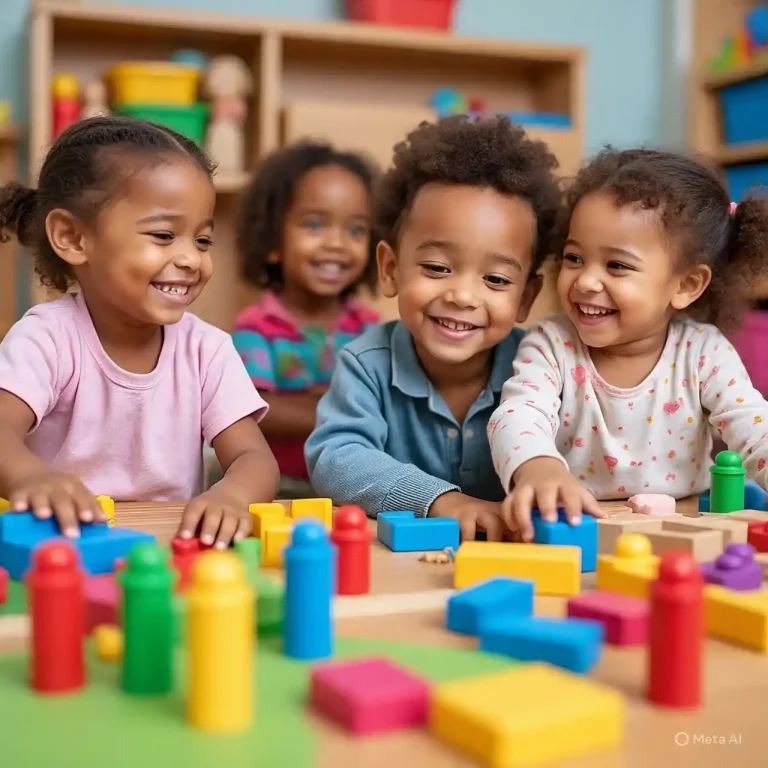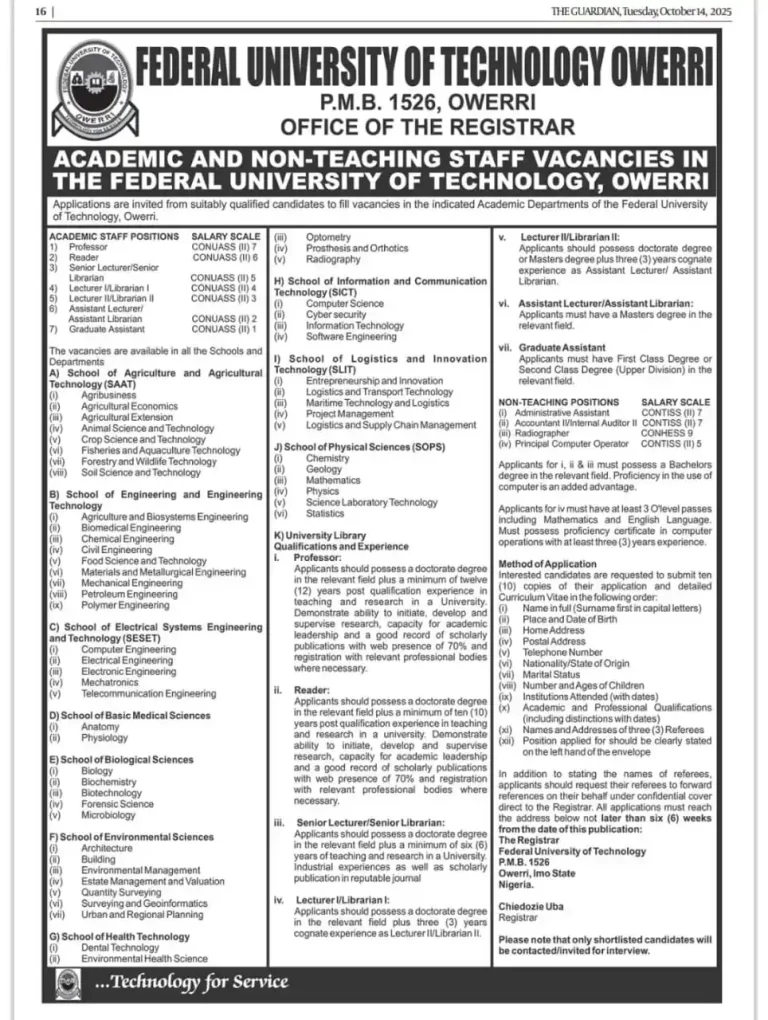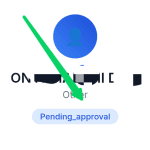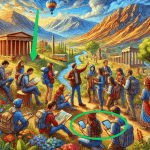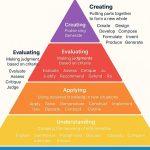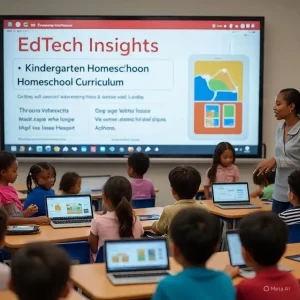
How to Create a Kindergarten Homeschool Curriculum: A Complete Guide for Parents
Kindly Share this post:
If you’re considering a kindergarten homeschool curriculum, you may feel both excited and nervous. Can you really teach your 4- to 6-year-old at home? The answer is yes. Kindergarten learning is all about play, curiosity, and foundational skills. You don’t need to be a professional teacher to guide your child through this stage; you already possess the most important qualification: a deep knowledge of your child’s needs and interests.
In this guide, we’ll explore what a kindergarten homeschool curriculum looks like, the subjects you should cover, free and paid resources you can use, and practical tips to make your journey smooth and enjoyable. We will provide extensive, simple details under each heading to offer complete clarity and depth.
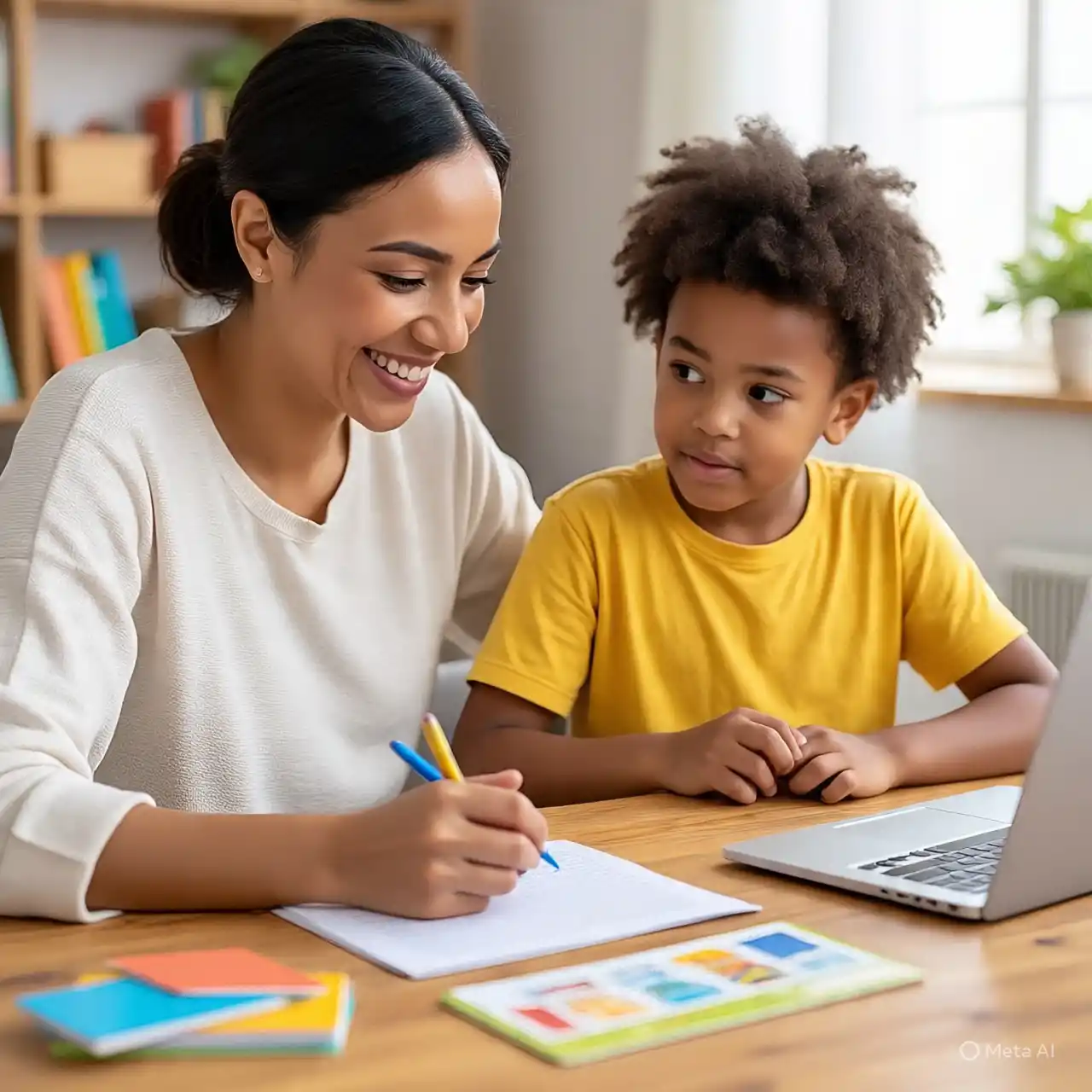
What Is a Kindergarten Homeschool Curriculum?
Table of Contents
ToggleA kindergarten homeschool curriculum is simply the learning plan you create (or adopt) for your child at home. Unlike traditional school, homeschooling allows you to customize lessons to fit your child’s pace, strengths, and interests. This customization is the cornerstone of successful homeschooling, ensuring education is always a positive, tailor-made experience. The curriculum is a guide, not a dictator, allowing the educational environment to adapt daily.
Most kindergarten programs focus on:
- Reading and writing basics
- Early math skills
- Hands-on science exploration
- Social awareness and good habits
- Play, art, and creativity
The beauty of homeschooling is flexibility. You’re not tied to a rigid classroom schedule. If your child learns better outdoors, you can use nature walks as science lessons. If they love music, songs can reinforce numbers and letters. For instance, a spontaneous trip to a farm can instantly become a lesson in biology and community roles.
The Three Pillars of Kindergarten Education
Effective kindergarten learning balances three essential areas, all integrated through play:
- Cognitive Development: This includes the academic basics like phonics and numeracy, focusing on critical thinking and problem-solving through simple puzzles and open-ended questions.
- Motor Skill Development: Both fine motor skills (pinching, cutting, drawing, zipping) and gross motor skills (running, skipping, balancing) must be practiced daily, as they are crucial precursors to reading and writing proficiency.
- Social-Emotional Learning (SEL): This involves managing emotions, sharing, listening to others, and learning basic manners. SEL is primarily taught through modeling, literature, and peer interaction (socialization).
Benefits of a Kindergarten Homeschool Curriculum
Parents often ask: “Why homeschool at such a young age?” The benefits are clear and profound, setting a strong, positive precedent for lifelong learning:
- One-on-one attention – Your child gets your full focus. This level of individualized instruction allows you to instantly recognize and correct misunderstandings with tailored examples, leading to stronger, faster retention of concepts.
- Customized learning – Every child learns differently. You can adjust methods for a visual learner, an auditory learner, or a kinesthetic learner to ensure maximum engagement. You control the pace entirely, eliminating unnecessary repetition or stressful rushing.
- Family bonding – Learning together builds strong connections. Sharing the small moments of discovery creates positive, shared memories that deepen the parent-child relationship. Education becomes a natural part of family life.
- Values and culture – You decide what traditions or beliefs to include. The curriculum can be woven around your core family values, ensuring that your child’s educational content aligns perfectly with your ethical and cultural priorities. You are the curator of their earliest worldview.
- Stress-free environment – No rigid classroom pressure. The home is a secure, comfortable space where mistakes are celebrated as opportunities for learning. This relaxed atmosphere minimizes anxiety often associated with early performance metrics and standardized testing.
- Protecting Playtime: Homeschooling ensures that the most developmentally appropriate activity for a 5-year-old—unstructured play—is fully protected, recognizing its critical role in building problem-solving and executive function skills.
What Subjects Should Be Taught in Kindergarten Homeschool?
A common question parents ask is: “What exactly should I teach my kindergartener?” The focus is on foundational competence and high engagement.
1. Language & Literacy
Literacy is the most essential focus, moving the child from speaking to decoding written language.
- Alphabet recognition: Mastering both uppercase and lowercase letters, not just naming them, but recognizing them in different fonts and environments. A simple detail is using tactile tools like sandpaper letters or magnetic letters.
- Phonics and sounds: Crucially, learning the most common sound each letter makes (e.g., short vowel sounds: /a/ as in apple). Begin practicing blending simple two-letter and three-letter (CVC) words like at and cat.
- Early handwriting: Focusing first on the pincer grip and proper posture. Start with tracing lines and shapes, then move to tracing and copying simple letters and numbers using large crayons or chalk.
- Retelling simple stories: This builds comprehension, memory, and sequencing skills. After reading, ask the child to summarize the Who, What, Where, and Why of the story.
Starfall Reading Games and PBS Kids Reading Resources can help reinforce phonics and sight words through interactive, fun digital practice.
2. Math
Early math skills are built on concrete manipulation and strong number sense.
- Counting, sorting, patterns: Counting accurately with one-to-one correspondence (touching each item as they count it) to 30 or higher. Sorting objects by two attributes (e.g., small and red). Identifying and extending simple patterns like A-B-A-B or A-A-B-B.
- Basic addition and subtraction: Using manipulatives (blocks, pennies, buttons) to model the joining (addition) and separating (subtraction) of sets within 10. Focus on number bonds and ways to make 5 or 10.
- Shapes and sizes: Identifying, drawing, and describing 2D shapes (circle, square, triangle) and 3D shapes (sphere, cube). Comparing objects using appropriate vocabulary: taller/shorter, heavier/lighter, wider/narrower.
Cool Math 4 Kids offers free activities that turn counting and simple operations into engaging online games, supplementing hands-on lessons.
3. Science & Nature
Science is observation and exploration, using the natural world as the classroom.
- Weather and seasons: Keeping a simple daily weather journal with drawings. Discussing the water cycle basics and how seasons affect plants and animals (e.g., hibernation, migration).
- Plants and animals: Simple biology—planting a seed in a clear cup and observing its growth (root, stem, leaves). Discussing the basic needs of all living things.
- Simple experiments: Exploring concepts like floating/sinking, mixing primary colors to create secondary colors, or creating a baking soda volcano. These activities introduce the steps of the scientific method (predict, test, observe).
Try NASA Kids’ Club for fun science games that introduce concepts of space, engineering, and technology.
4. Social Studies
Social studies builds awareness of self, family, community, and citizenship.
Related Posts
- Family roles: Discussing family structure and traditions. Creating a simple personal timeline of major life events (birth, first steps).
- Community helpers: Learning about essential jobs like firefighters, police officers, doctors, and postal workers. Simple detail: taking a field trip to the local fire station or library.
- Maps and geography basics: Learning their home address, phone number, and state. Drawing a simple map of their room or neighborhood. Using a globe to locate continents and oceans.
5. Arts & Creativity
Art is crucial for developing fine motor skills, spatial reasoning, and emotional expression.
- Drawing, music, and crafts: Providing access to diverse, open-ended materials (paint, clay, glue, natural items) and emphasizing the process of creation over the perfection of the final product.
- Storytelling through art: Encouraging the child to narrate the story or idea behind their drawing, linking visual expression with verbal language.
6. Physical Education
Movement is essential for brain development and focus.
- Movement, play, and coordination: Focus on developing gross motor skills (hopping, galloping, skipping). Include activities that practice crossing the midline (e.g., marching and touching the opposite elbow to the knee) which integrates brain functions.
- Life Skills: Incorporate tasks like dressing themselves, tying shoes, zipping coats, and simple cooking—these build independence and coordination.
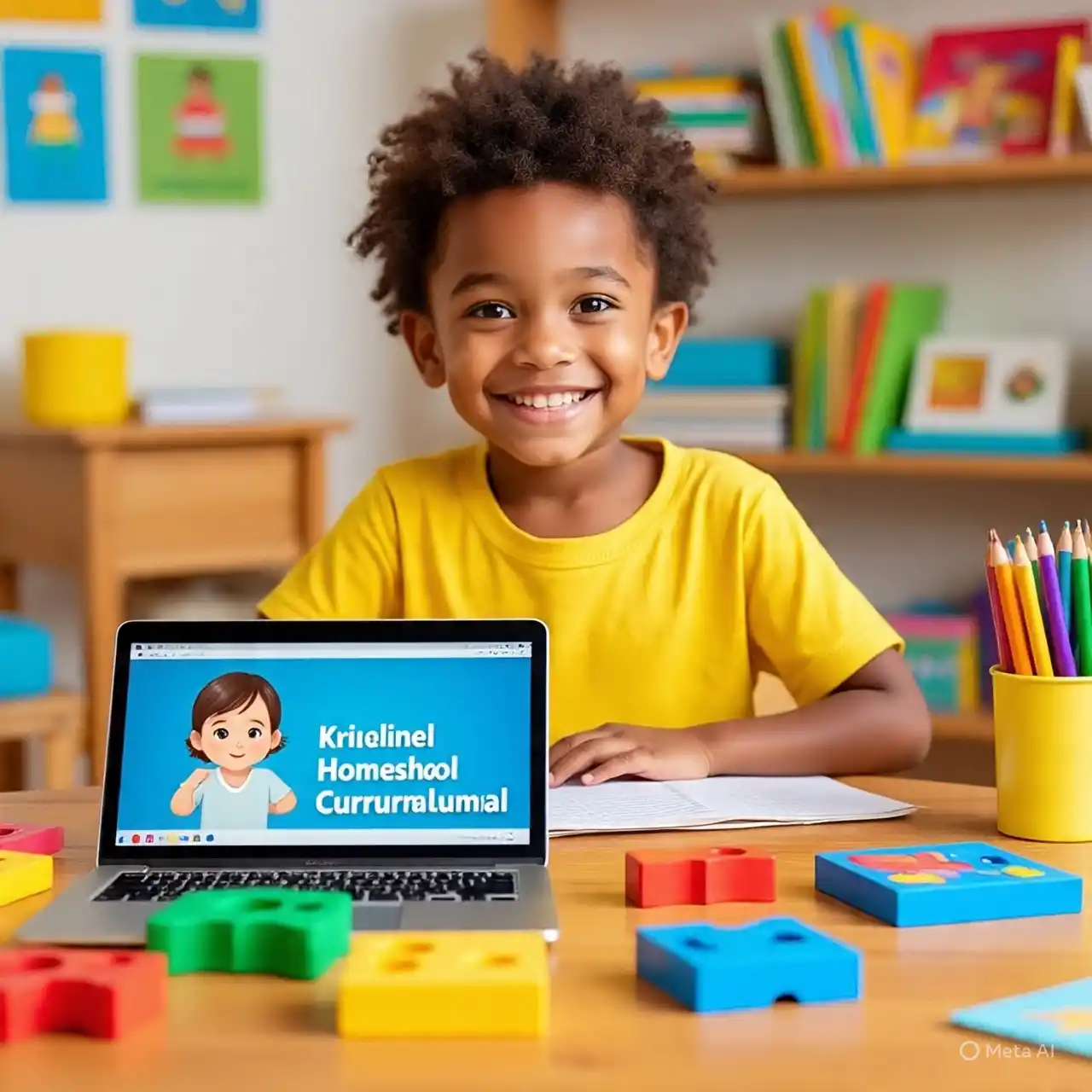
Sample Daily Schedule for Kindergarten Homeschool
The ideal kindergarten homeschool schedule is short, focused, and includes generous breaks. The total time spent in formal instruction should be around 2-3 hours.
| Time Slot | Activity | Duration | Simple Detail for Expansion |
|---|---|---|---|
| 9:00–9:20 | Morning songs & calendar | 20 min | Essential Routine: Singing alphabet and counting songs, discussing the day of the week, weather, and tracking the date. |
| 9:30–10:00 | Reading or phonics | 30 min | Core Literacy: 15 minutes of phonics drill (using magnetic letters/flashcards), followed by 15 minutes of rich read-aloud time by the parent. |
| 10:15–10:45 | Math games | 30 min | Hands-On Math: Using counters or small toys to solve simple addition problems or playing a board game that involves dice and counting. |
| 11:00–11:30 | Outdoor play | 30 min | Crucial Brain Break: Unstructured movement—running, climbing, or cycling. This is a non-negotiable part of the curriculum for focus. |
| 12:00–1:00 | Lunch and rest | 60 min | Independent Quiet Time: The child looks at books or engages in low-key, solitary play while the parent manages household tasks. |
| 1:15–1:45 | Science or social studies | 30 min | Project Time: A short nature walk, a simple experiment, or reading a non-fiction book about a different culture or historical event. |
| 2:00–2:30 | Art or music | 30 min | Creative Expression: Play with clay, finger painting, or using music from Jack Hartmann Kids Music Channel for movement and learning. |
| 2:45–3:00 | Storytime | 15 min | The final wind-down: Reading a beloved story together—a gentle, relaxing end to the formal learning day. |
Choosing the Right Kindergarten Homeschool Curriculum
Consider your child’s learning style, budget, and family philosophy. The ideal curriculum is one you can stick with that brings your child joy.
Popular Curriculum Options (Structured and Open-and-Go)
- Time4Learning – Interactive online lessons. An excellent digital option offering self-paced, animated lessons for core subjects with automated progress tracking.
- ABCmouse – Game-based early learning. A highly engaging, subscription-based curriculum covering literacy, math, and science through interactive games and activities.
- Easy Peasy Homeschool – Free structured program. A completely free homeschool curriculum that utilizes online links and printable resources, providing a detailed, day-by-day lesson plan, often with a faith focus.
- Oak Meadow – Arts-based homeschooling. Known for its gentle, nature-based, and Waldorf-inspired approach, prioritizing creativity, rhythm, and holistic development over early academics.
- The Good and the Beautiful – Strong literacy focus. A popular, literature-rich curriculum known for its beautiful design, open-and-go format, and comprehensive phonics program.
Free and Affordable Kindergarten Homeschool Resources
You don’t have to spend much to provide a rich education. Try these high-quality, free homeschool resources:
- Khan Academy Kids – Free math & literacy app. A top-tier, zero-cost educational app offering engaging lessons for reading, math, logic, and creative thinking games.
- Starfall.com – Reading and phonics activities. Excellent for reinforcing letter sounds and simple reading practice with interactive phonics readers.
- PBS Kids – Videos and games. Offers reliable, high-quality educational content and engaging videos across science, math, and social-emotional learning.
- Local libraries – Free books and events. The single best free resource, offering story times, access to digital resources, and educational events alongside a vast collection of books.
- YouTube channels like Jack Hartmann Kids Music Channel. Uses movement and engaging songs to teach everything from letter sounds to counting and following directions.
Common Challenges Parents Face (and Solutions)
| Challenge | Simple Detail Explanation | Practical Solution & Detail |
|---|---|---|
| Consistency | Maintaining a routine is difficult when the home environment is often chaotic or overwhelming. | Use a weekly planner. Plan only the three non-negotiable core subjects (Phonics, Math, Read Aloud) for each day. This ensures the foundation is covered even if the day is interrupted. |
| Play vs academics | Parents fear that time spent playing is time wasted academically, leading to excessive worksheet use. | Remember, play = learning. Frame building with Legos as a geometry lesson and digging as a biology lesson. Limit formal seatwork to 10-15 minutes max. |
| Socialization | Worry about isolation and lack of interaction with diverse peer groups. | Join local homeschool groups (co-ops). Enroll in community activities: sports, music lessons, or library groups. Social skills develop naturally through varied interaction. |
| Self-doubt | Feeling unqualified or worrying about missing key milestones. | Patience is more important than a teaching degree. Focus on building a strong relationship and a love of learning. Your deep knowledge of your child is your primary, indispensable qualification. |
Tips for a Successful Kindergarten Homeschool Journey
- Keep lessons short. Ten to fifteen minutes is often the limit for focused attention. Use multiple short bursts of instruction throughout the day.
- Read aloud daily. This is the single most important activity. It builds vocabulary, models fluent reading, and creates a love for stories, even when the books are above their current reading level.
- Use everyday life as a classroom. Counting money at the grocery store, measuring ingredients for dinner (fractions/measurement), and reading road signs are all highly effective, practical lessons.
- Celebrate small milestones. Acknowledge effort and growth—not just perfection. Celebrate mastering a new letter sound or successfully pouring their own juice, affirming the effort, not just the result.
- Stay flexible. If your child is having a rough morning, scrap the academic plan and pivot to a nature walk or a baking project. The flexibility of homeschooling is your greatest strength.
Conclusion
Homeschooling kindergarten is both doable and rewarding. You don’t need to recreate school at home—just nurture curiosity and create a love for learning. Whether you choose a structured curriculum or a mix of free resources, the goal is the same: to help your child thrive.
FAQs on Kindergarten Homeschool Curriculum
Q1: What subjects should I teach in kindergarten homeschool? A: Focus on reading, math, science, social studies, art, and physical activity. Literacy and numeracy are the priority, taught through hands-on play.
Q2: How many hours a day should I homeschool kindergarten? A: 2–3 hours a day is usually enough, with breaks and lots of play. Formal instruction should be limited to short, focused sessions of 10-20 minutes.
Q3: Can I homeschool kindergarten for free? A: Yes. Use free tools like Khan Academy Kids, Starfall.com, and local libraries. You can build a comprehensive curriculum using entirely zero-cost public resources.
Q4: Do I need to follow a state-approved curriculum? A: It depends on your location. Check your state homeschooling laws at HSLDA Legal Resources. Regulations vary widely; some states require notification, while others mandate specific subject matter or assessments.
Q5: How do I socialize my kindergartener while homeschooling? A: Join co-ops, sports clubs, or library groups. Social skills develop naturally through varied play and interaction with people of all ages in community settings.

